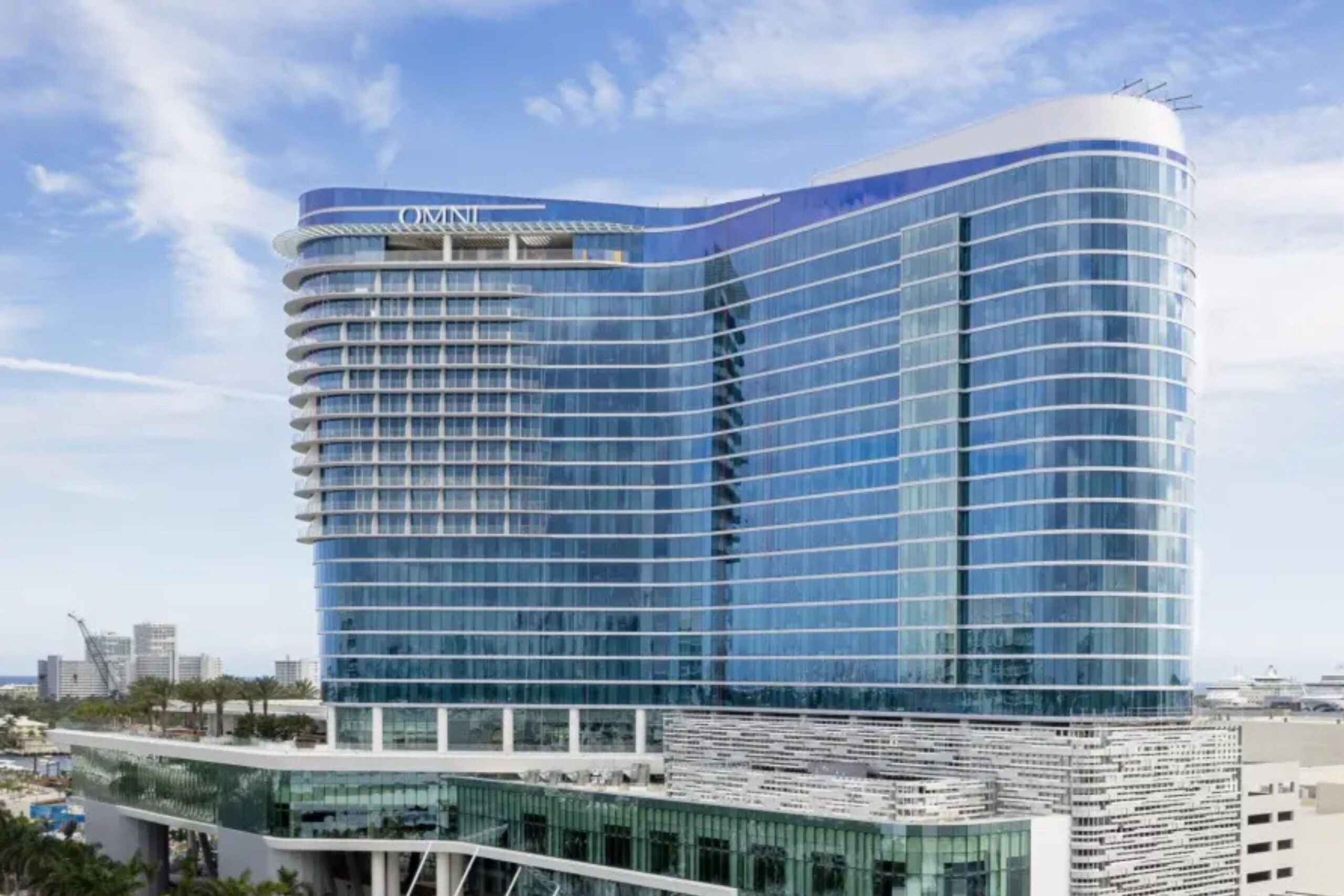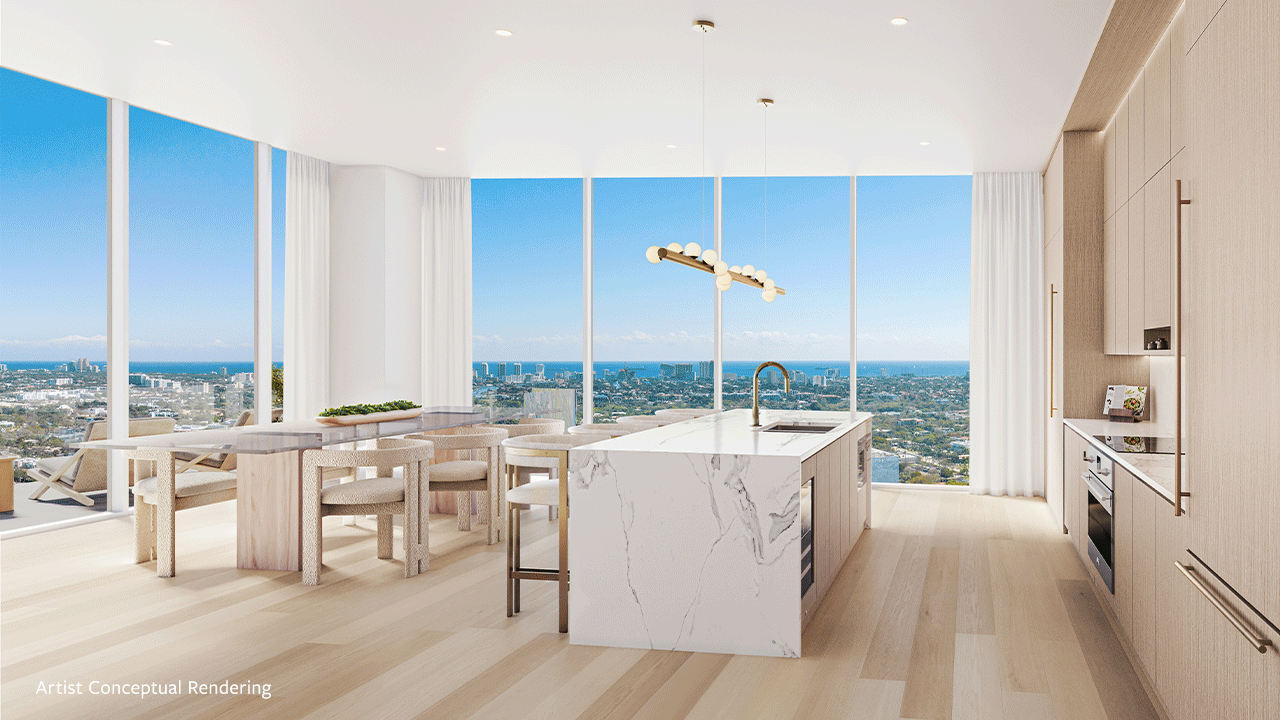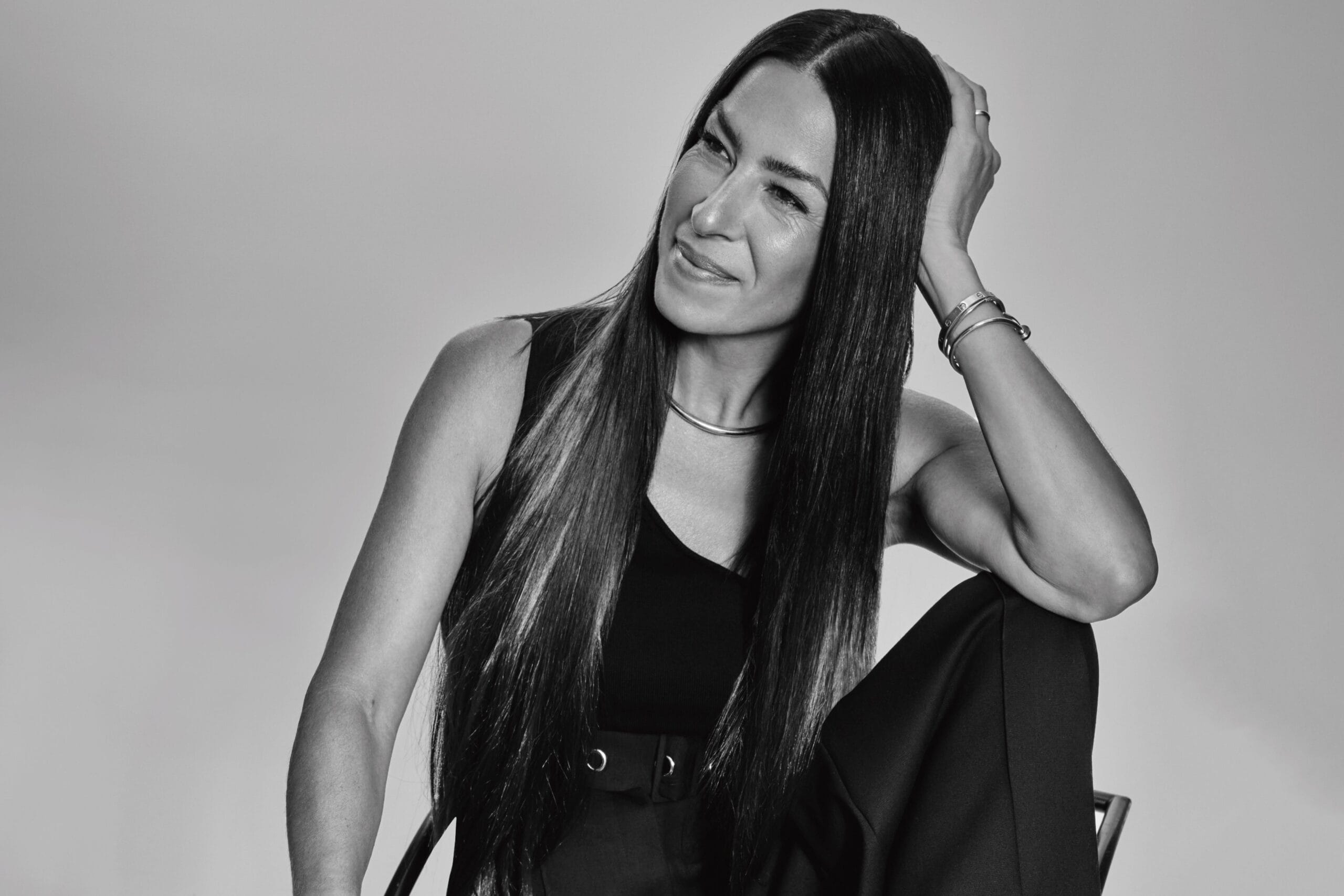A monkey with a martini in hand. A dog climbing a lemon tree. When I mention to a friendly staffer that the wallcoverings in Palm Beach’s newly redesigned Colony Hotel remind me of the title sequence of The White Lotus, he smiles. “Everyone says that.” Then it’s my turn to smile. Standing in the lobby is like being wrapped in a fancy in pink and green. And it’s just right for the moment, as this is Palm Beach’s first “season” that feels unburdened from the pandemic.
The calendar marks this as a special moment as well: It’s the hotel’s 75th anniversary, and the occasion was begging for a full redo of the 89 accommodations, spearheaded by Kemble Interiors, which was founded in 1982 and is based in Palm Beach and New York. To perfectly capture the Palm Beach aesthetic, design partners included Society Social, Schumacher, Brown Jordan, Farrow & Ball, Matouk—and de Gournay, which provided the hotel’s custom-designed murals that deliver so much of the enveloping ambience.
“It has long been our intention to align the guest rooms with the ethos of the rest of the property,” says Colony owner and president Sarah Wetenhall. “We desire each guest room to be a luxurious representation of the Palm Beach way of life, generously imbued with the Colony’s unique sense of playfulness, with special attention dedicated to how our guests experience the space.”
The redesigned rooms display a capsule furniture collection by Society Social; with 11 pieces in all, the collection—which includes artisan-crafted rattan and faux bamboo pieces—was two years in the making. It was created through a collaboration between Wetenhall and Society Social founder, Roxy Owens. Interior walls feature Farrow & Ball paint in heritage colors from the brand’s signature palette, while renowned fabric house Schumacher also collaborated on the project to recreate heritage designs customized in pink, green and blue colors exclusive to the Colony Hotel. Somehow these elusive shades of pink, green and blue register as familiar only from my memories of faded society clippings from the 1940s and ’50s.
I linger in the lobby merely for pleasure, and catch a glimpse of the main pool and the adjacent restaurant (complete with hanging gardens), both of which remind me of the Hotel Bel-Air in Los Angeles, which opened the year before the Colony Hotel. I soon learn that my accommodations are across the street, one of only seven villas accessible through an iron gate and past a row of the hotel’s pink bicycles.
At this point, the lush, cottagey scene is an echo of the private bungalows at the Beverly Hills hotel and the (temporarily shuttered) Four Seasons Biltmore in Santa Barbara. I am in subtropical midcentury nirvana. The Palm Beach aesthetic has more in common with southern California’s style than with Miami Beach’s. The vast villa itself is pleasingly eclectic, with a tasseled and tufted corner banquette set under exposed beams in the living room, and magnificent tilework in the kitchen and bathrooms.
Soon I am drawn outdoors, to the plush seating in my private garden (pink cushions with white piping) and in the discreet pool (green cushions with pink piping), which is reserved for villa guests. I swim laps for hours and never have to share the water or the deck around it, reinforcing what I’ve always felt—that low density is one of the more compelling indicators of luxury.
I leave the villa compound only for Swifty’s—the poolside restaurant with the twinkling chandeliers that drop just below the pergolas’ abundant foliage. Highlights at dinner: the poached “colossal” shrimp (which live up to their billing), the Chilean sea bass, and the Catsmo smoked salmon (sustainably raised), which is lavishly paired with salmon roe and toasted brioche. At my server’s suggestion, I top off the seafood meal with something more indulgent: a toffee pudding with butterscotch and pecans—which sends me back to my villa with barely enough room to enjoy the single French macaroon at my bedside, stamped with the comforting midcentury cursive of the Colony Hotel.Palm Beach’s Colony Hotel














